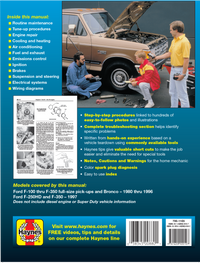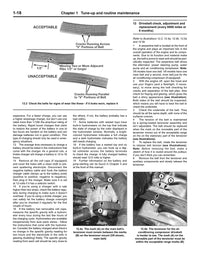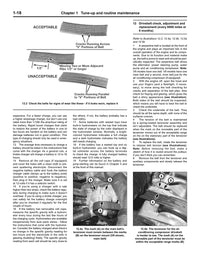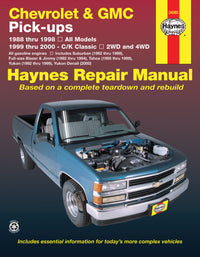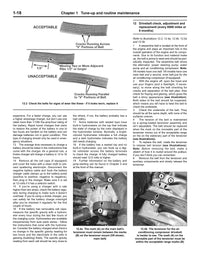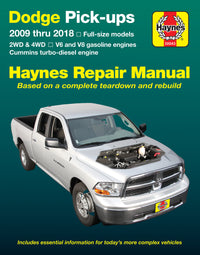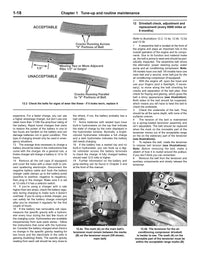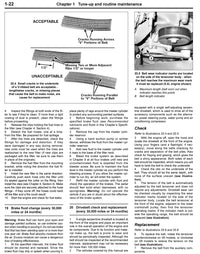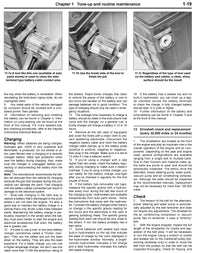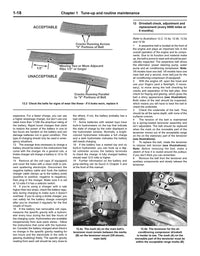Got a problem with your car? Haynes is here to help with your DIY car troubleshooting, enabling you to get to the source of the issue and then show you how to repair or replace the faulty component.
How to troubleshoot car electrical issues
The average modern car is full of computers and sensors that help the engine operate at peak efficiency but also make the driving experience more enjoyable via infotainment systems, climate control, heated electric seats, cruise control and myriad other luxuries.
Inevitably, some of this tech will go wrong at some point, so how can you do your own car problem diagnosis without getting a mechanic involved?

There are a couple of essential pieces of kit we'd recommend every home mechanic has in their toolkit. The first is a multimeter, which is inexpensive and allows you to check the state of your car’s battery, how well the alternator is charging, and whether or not there’s a broken circuit somewhere.

The second piece of vital car care kit is a fault code reader, also known as an OBD-II reader. An OBD reader can be a handheld diagnostic computer or an app on your phone that communicates with your car’s brain physically or via Bluetooth to diagnose fault codes, among other things. You can pay as little as a $20 for an OBD scanner and as much as hundred dollars – with the latter offering a multitude of features – but whichever you choose, they should all have the same minimum requirements, and be able to:
- Communicate with the vehicle
- Read fault codes
- Clear fault codes

What does this fault code mean?
The fault codes displayed by your OBD scanner won't mean anything unless you can decipher them. For example, what does 'P0303' mean? To decode it, you need to know what each digit stands for:
The first letter denotes what part of the car is at fault.
P = Powertrain, B = Body, C = Chassis, U = Network
The first of the four numbers will be either a ‘0’ or a ‘1’.
0 = Standardized (SAE) fault codes, 1 = Manufacturer specific codes
The second digit denotes which of the car systems is at fault. There are eight different categories;
0 = Fuel and Air Metering and Auxiliary Emission Controls, 1 = Fuel and Air Metering, 2 = Fuel and Air Metering (injector circuit), 3 = Ignition systems or misfires, 4 = Auxiliary emission controls, 5 = Vehicle speed control & idle control systems, 6 = Computer & output circuit, 7 = Transmission
The third and fourth digits are simply used to define the exact fault code in question.
In our example we can see that the DTC is P0303.
P = Powertrain fault
0 = Standardized fault
3 = Ignition systems or misfire
03 = misfire on cylinder 3
Diagnose a variety of trouble codes here
How to diagnose car engine problems at home
Here are some common engine symptoms and possible causes, which you can investigate with the help of a Haynes manual:
Engine turns over but won't start
Possible causes:
- Gas tank empty
- Battery discharged (engine rotates slowly)
- Battery terminal connections loose or corroded
- Ignition components damp or damaged
- Broken, loose or disconnected wiring in the ignition circuit
- Worn, faulty or incorrectly-gapped spark plugs
- Fuel injection system fault
- Major mechanical failure (eg, timing belt/chain)
- Air in fuel system (diesel)
Engine won't turn over
Possible causes:
- Battery terminal connections loose or corroded
- Battery discharged or faulty
- Broken, loose or disconnected wiring in the starting circuit
- Defective starter solenoid or switch
- Defective starter motor
- Starter pinion or flywheel/driveplate ring gear teeth loose or broken
- Engine earth strap broken or disconnected
Engine idling erratically
Possible causes:
- Air filter element clogged
- Vacuum leak at the throttle body, intake manifold or associated hoses
- Worn, faulty or incorrectly-gapped spark plugs
- Uneven or low cylinder compressions
- Camshaft lobes worn
- Timing belt/chain incorrectly fitted
- Blocked injector/fuel injection system fault
Common car problems FAQ
1. What does this warning light mean?
Dashboard warning lights can signal everything from a low gas tank to oil pressure issues. Tap here to read about dashboard warning lights you can't ignore.

2. Car pulls to one side
When driving, your car's steering wheel can pull to the right or left because of an issue with the tires, wheels, brakes, suspension or steering components.
Tap here to read more about what's to blame for a steering wheel pulling.
3. Uneven tire wear
Tire wear tread patterns give a clue to the underlying issue.
Shoulder wear can be caused by underinflation (check and adjust the pressures), the wrong wheel camber (check suspension parts) or, rarely, hard cornering (for example, if you use your car for track days).
Center wear is caused by overinflation. Again, check and adjust the tire pressures.
Uneven wear can be caused by an unbalanced wheel (get a tire shop to check for you), incorrect toe setting, camber or castor, or worn suspension parts.


